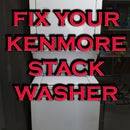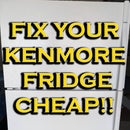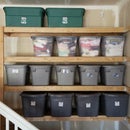Introduction: The Base Camp Trailer
As an engineering student I've been doing my summer internship with a small business that builds these base camp trailers. Since it's a new design, I've been able to play a major role in the manufacturing process.
Engineering is my passion and I've loved my experience here, therefore I'm excited share an overview of how it's all put together.
Step 1: Equipment
1. Laser Cutter
2. Press-Break
3. Robot Welder
These are the major machines that are used in the shop. The laser cutter cuts up to 1/2 inch thick steel and is used to cut out parts from sheet metal with extremely high precision.
The press-break is used to bend and fold the parts creating the proper shapes needed for the base camp trailer.
The robot welder is then programmed to flawlessly weld many of the parts together.
Although much of the hard work is taken care of by the robot, a skilled welder is still needed to compensate for it's limitations.
Step 2: Jiggin It Up
This is a jig I designed and built to construct the frame of the base camp trailer. Typically 1 jig is used for each side but I was able to overlay 4 sides onto 1 jig. I used a color-coded system to mark out the different sides. In the engineering field there is a very technical term for this type of preparation... it's called "idiot proofing".
Note: You'll notice there are 3 colors, not 4. White is for both sides which are the same due to symmetry.
Step 3: Frame Assembly
Bringing the sides together, from the robot, produces the framework of the base camp trailer. Since the jig and robot held each side nice and square it takes very little effort to join them together with accuracy.
Step 4: Side Panels
These panels were cut out with the laser and then tacked onto the sides of the frame. They are cut from 14 gauge steel. Thicker steel adds to the weight but thinner steel tends to warp with welding and powder-coating.
Step 5: Sanding
Who the hell sands metal...right? Well, welding can burn through on the other side producing an imperfection. These need to be ground or sanded down to produce a smooth finish. All of the internal shelves are welding into place therefore a significant amount of sanding/grinding on the outside was needed. This is why you see all of the "patch marks" all around the trailer.
Step 6: Burn-Through
These are some examples of burn-through before and after sanding/grinding.
Step 7: Sand-Blasting
In order to create a good bonding surface for the paint, the entire trailer needs to be sand-blasted. This is a very dirty job. I normally don't condone violence but If you're ever offered a job as a sand-blaster, punch them in the face and run away!
Nonetheless, anyone wanting a quality finish will have to sand-blast the surface first. It removes rust, increases the lifespan of the paint which in turn protects against corrosion.
Step 8: Seam Sealer
This is a type of caulking that fills in the seams and reduces the chance of water seeping into the cabin. It can also be used to correct any minor imperfections. Once dried, it is sanded smooth.
Step 9: Primer
A primer powder is added to the shell and baked in a huge oven to create a better bonding surface for the paint to adhere to.
Step 10: Paint
Once cooled from baking the primer, paint is then blown on followed by a second round in the oven for a couple hours.
Step 11: Adding the Innerds
With a clean new color all the accessories are painstakingly added into the trailer. This part tends to take the most time since each feature requires "care" to maintain a finished touch.
Step 12: Adding Accessories
The firebox, tent, kitchen, water tank, water heater, and independent axle are added to this trailer as options chosen by the customer.
Step 13: The Finished Product
When fully loaded this trailer comes with
1. Tent
2. Solar panel
3. Rhino-rack
4. Canopy
5. LED floodlights
6. Power outlets
7. Shower
8. Water pump
9. Water heater
10. Water filter
11. Water tank (30 gal)
12. Battery pack
13. Kitchen
14. Wood box
15. Propane tanks
16. Gun box
17. Radio communications box
Additional customizations are also available but these are the major options offered.




